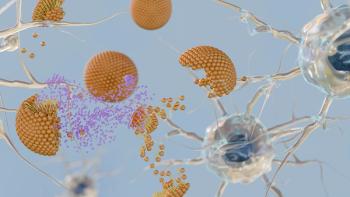
US National Science and Technology Council Promotes Advanced Manufacturing
The Subcommittee for Advanced Manufacturing of the National Science and Technology Council highlights biopharmaceutical manufacturing as an emerging priority.
Advanced biopharmaceutical manufacturing technologies, including continuous biopharmaceutical manufacturing, are among the "emerging priority" areas highlighted in an April 2016 report, “Advanced Manufacturing: A Snapshot of Priority Technology Areas Across the Federal Government,” by the Subcommittee for Advanced Manufacturing of the National Science and Technology Council. The report lists a range of advanced manufacturing technologies that the US government believes will improve the economy and create jobs. Federal funding is already going into research and development of these areas, with many projects ongoing.
"A vibrant manufacturing sector, especially one invigorated with the latest technologies, requires focused investments along the entire technology innovation pipeline," wrote Tom Kalil, deputy director for Technology and Innovation Office of Science and Technology Policy, in the report. "An innovation pipeline stocked with ideas, from the laboratory bench to the manufacturing shop floor, is required to 'make it here' so that we can 'sell it everywhere.' The advanced manufacturing processes and products we desire-the types that lead to greater economic prosperity-is the result of knowledge, accumulated through research and development, translated systematically into know-how.”
Engineered cells
One of the emerging priority areas is engineering biology-designing and tailoring biological systems to manufacture products. This field evolved from bioprocessing expertise in the US, says the report. Engineered cells produce proteins for biopharmaceuticals, as well as fuels, chemicals, and biomaterials. Designing reproducible, robust, and stable processes in a bioreactor is a challenge that will require multiple approaches. The report notes, "These approaches include a clearer understanding of the biological mechanisms underlying DNA stability and repair, epigenetics, and evolution, as well as development of quantitative tools that enable the prediction of complex biological designs in a manufacturing environment.”
Regenerative medicine
A second emerging priority area related to biologics is regenerative medicine. "Regenerative medicine, and the clinical use of stem cells, has the potential to repair or replace dysfunctional, degenerating, or absent cells, tissues, and organs. … Additionally, engineered cells can be used to redirect immune function and enable the emergence of 'immuno-oncology,'" says the report, which adds that the US government invested $2.89 billion between 2012–2014 in regenerative medicine, primarily for the development of therapeutic techniques and technologies. A focus on process engineering is crucial to achieve manufacturing reproducibility. The report describes several challenges:
“Manufacturing cell and tissue products is significantly more challenging than manufacturing biopharmaceuticals. This is because manufacturing release criteria for bioengineered cells, tissue, and organs are largely undefined; the mechanisms by which these living products produce their effects are poorly understood; and they contain active cells which continue to grow and evolve. Additional challenges for manufacturing cell-based products stem from the complexity of the product and the bioreactor process. These challenges include appropriate design of bioreactors for adherent cells; characterization of the product with measurements that predict the clinical effectiveness of the product; determining tolerances of variation in cell types; how to store, ship, and deliver product with a very short (hours-long) shelf life; and how to assess the purity of the product in minutes or hours, instead of days. Development of methods to address the long-term storage of cells as manufacturing inventory is essential to increase their flexibility, reliability, and cost-effectiveness.”
Continuous manufacturing
A third area of emerging priority in the report is continuous manufacturing for both small- and large-molecule pharmaceuticals. Regarding biopharmaceutical production, rhe report notes that continuous perfusion and fermentation systems are being used, but needed improvements include "the development of robust and stable cell lines that maintain high productivity over prolonged time periods (e.g., 2–3 months), design of media formulations to support high cell density, and optimization of bioreactor conditions to provide the high cell density at high viability and positive growth rates. Various enabling technologies, such as automatic cell density control, efficient oxygenation and ventilation, and foam control, must be developed and optimized." Work is also needed in continuous downstream purification for improved scale-up and development of continuous viral inactivation and removal. According to the report, "An important design requirement for all continuous downstream unit operations is that they must operate over prolonged periods under stringent sterility control conditions, which will require novel and unconventional solutions."
Continuous manufacturing processes require real-time analytics. In biopharmaceutical processes, process analytical technology (PAT) is needed for attributes such as activity, aggregation, glycosylation, and impurity level. PAT for biopharmaceutical processes today is often customized, which restricts widespread adoption, says the report.
Several federal programs are involved with developing continuous biopharmaceutical technology, including NIST, Defense Advanced Research Projects Agency (DARPA), and Biomedical Advanced Research and Development Authority (BARDA). The DARPA program aims to "enable timely response to patient needs and emergent threats by developing miniaturized and distributed manufacturing platforms to produce multiple small-molecule active pharmaceutical ingredients and protein therapeutics on demand." Exploratory studies under contract to BARDA are also investigating continuous manufacturing processes. Representatives from BARDA will be speaking about medical countermeasure manufacturing as part of a
Source:
Newsletter
Stay at the forefront of biopharmaceutical innovation—subscribe to BioPharm International for expert insights on drug development, manufacturing, compliance, and more.





